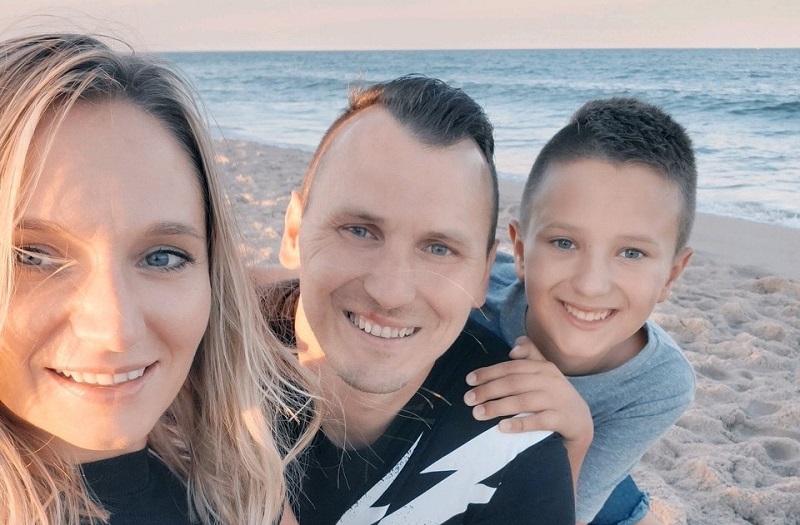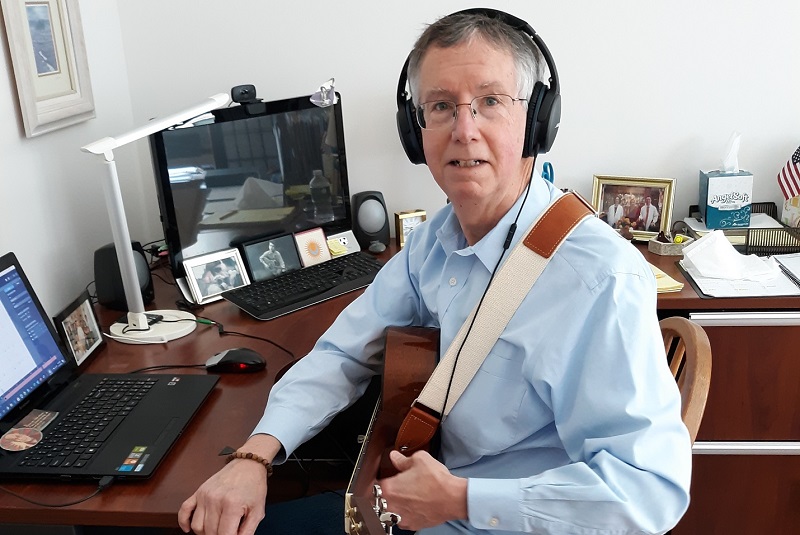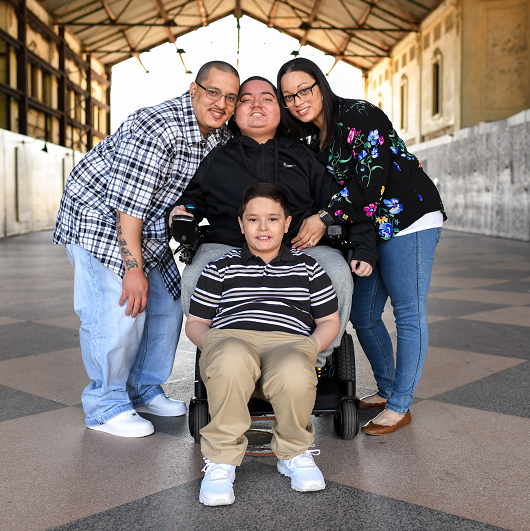Diagnosis at Last: Takayasu’s Arteritis

July 29, 2019
As a child growing up in the Dominican Republic, Nathalie Duran, now 20, regularly suffered from joint pain, muscle aches, headaches and dizzy spells. She and her mother visited several different doctors to find the cause, but all of them said that Nathalie was simply anemic and experiencing growing pains. They’d instruct her to take iron supplements and eat iron-rich foods, and would send her on her way. But even as a child, Nathalie could sense that something wasn’t right.
“I knew it wasn’t just anemia or growing pains,” she says. “I never felt well.”
Nathalie and her mother moved to Guttenberg, New Jersey, in March 2012, and she soon started experiencing fainting spells, despite following doctors’ orders. She was eventually hospitalized for a dangerously low hemoglobin count, but when she was released home, she still didn’t have the answers she needed.
Then in 2017, Nathalie started having leg pain—similar to a calf strain—to the point that even her walking was affected. In early 2018, she made an appointment with a vascular doctor, who referred her to Joseph M. Sanzari Children’s Hospital at Hackensack University Medical Center.
“He recommended that I go to Hackensack because they would have the necessary equipment to investigate the reason they weren’t able to feel a pulse on my wrists and why my blood flow wasn’t good in the extremities of my body,” Nathalie says.
Finally, a Diagnosis
In February 2018, Nathalie met with Ginger Janow, M.D., a pediatric rheumatologist at the Children’s Hospital. After reviewing her scans and meeting with Nathalie, Dr. Janow confirmed a rare but clear diagnosis: Takayasu’s arteritis. Takayasu’s is a potentially fatal disease that causes inflammation of the blood vessels. The inflammation can restrict blood flow and damage vital organs and tissues.
“Because Nathalie was seeing multiple providers in various emergency rooms, they were missing the big picture and treating only the acute issues. Most clinicians will never see a single Takayasu’s patient during their career. If you’re not familiar with a disease, you won’t think of it, and hence you can’t diagnose it,” Dr. Janow says. “In adults, Takayasu affects about one in 1 million per year, and it’s even less common in children.”
Nathalie’s scans revealed that she had inflammation in her aorta—the large artery that carries blood from the heart to the rest of the body—and almost all of the major vessels coming from her aorta to her lungs, arms, digestive tract and brain.
“When I met her, I thought she looked so much better than her scans looked,” Dr. Janow says.
“I remember thinking that she must be a very strong person because I was expecting to see someone much sicker based on her CT scan. Of the four major arteries that provide blood to the brain, three were essentially obliterated, leaving one to keep her brain functioning.”
Because patients may have very few or no symptoms, and the disease is so rare, it’s common for doctors to misdiagnose patients for years.
“Nathalie probably had it for at least six years before a proper diagnosis,” Dr. Janow says. “Going back, it becomes apparent that she had long-standing anemia, her blood pressure was very low, the numbness and tingling in her arms and legs were getting worse and she had fainting episodes. They were all treated as isolated things, but we figured out that it was all part of the same disease.”
Adds Nathalie, “After meeting Dr. Janow, I finally had a clear picture of what was going on with me and my body. She has always helped me understand the situation.”
What Is Takayasu’s Arteritis?
Takayasu’s arteritis is a rare but potentially fatal disease that involves inflammation in the walls of the largest arteries in the body, the aorta and its main branches. This inflammation leads to narrowing of the arteries, reducing blood flow to many parts of the body. Takayasu’s arteritis can lead to arm, leg and chest pain, high blood pressure, and eventually heart failure or stroke. Even with treatment, relapses are common and symptoms can come and go.
Takayasu’s arteritis is more common in women than men, and while the disease most often starts in young adults, children and middle-aged people are not immune, according to the American College of Rheumatology. The disease results from an attack by the body’s own immune system, causing the inflammation.
Finding the Best Possible Treatment
In addition to a 24-hour lab testing and infusion center on-site, Hackensack Meridian Health has the largest pediatric rheumatology group in the state. So Dr. Janow was not only able to rely on her own expertise but also that of the five other pediatric rheumatologists on staff.
“I’m so fortunate to work with a team of people whose knowledge and experience is so vast,” Dr. Janow says.
Takayasu’s arteritis is a chronic disease that requires long-term treatment. After reviewing her options, Dr. Janow chose to treat Nathalie with a corticosteroid to reduce inflammation in the arteries and an immunosuppressive drug that can be administered through an IV or injected every two to four weeks.
The immunosuppressive drug makes Nathalie more susceptible to infection, so Dr. Janow routinely checks her labs, including blood counts, cholesterol and liver, to ensure that her body continues to respond well to the medication.
Nathalie has had some setbacks, but her medical team has been able to react quickly.
For example, in April 2018, she called Dr. Janow because she was having a headache more severe than she had ever experienced. “Dr. Janow told me to go to the Emergency Department immediately,” says Nathalie, who ended up having a seizure while at the hospital. “Thank God I was there because I was able to get treated for the seizure immediately.”
Life After Diagnosis

Nathalie feels better than ever before. She’s able to walk longer distances without leg pain and even jog a bit. Her migraine frequency has drastically decreased.
But her disease is never far from her mind. “I still get dizzy sometimes, so I try to do things slowly,” Nathalie says. “And I’ve learned that the best way to keep my symptoms away is to not sleep too much, move my body right when I wake up, eat and drink healthy foods and limit my stress.”
Flare-ups do occur, and living with a chronic illness can be emotionally draining. “I often ask God for the strength to fight against the bad feelings,” Nathalie says. “I just hope that other kids won’t have to wait as long as I did for a diagnosis. My life could have been so different if I’d been treated sooner.”
Eventually, if the disease calms down, Dr. Janow says Nathalie could consider vascular surgery to improve blood flow.
“Her spirit amazes me daily,” Dr. Janow says. “I am so impressed by her resilience in the face of this illness and her ability to find the positives. I feel lucky to be a part of her care team.”
Feeling Alive
Today, Nathalie attends college, studying early childhood development, and works part-time taking care of children. She’s even able to walk the 20 minutes to work most days. She worries about her health but is happy to finally see improvement.
“Before I met Dr. Janow, my arms and legs felt like they were dead,” Nathalie says. “And now they feel alive.”
Next Steps & Resources
- Meet your source: Ginger Janow, M.D.
- To make an appointment with Ginger Janow, M.D. or another provider, call 800-822-8905 or visit our website
The material provided through HealthU is intended to be used as general information only and should not replace the advice of your physician. Always consult your physician for individual care.
After a Heart Attack in His Thirties, Where is He Now?

In early 2020, we shared the story of Przemyslaw “Simon” Blazejowicz, whose life hung in the balance as doctors at JFK Medical Center rushed to unravel the medical mystery that led to his heart attack...
After Experiencing an Aortic Aneurysm, Where is He Now?

In 2018, we shared the story of Thomas Redmond who was nicknamed “the healthiest man in the ICU”.

Oakhurst Father and Son Overcome Chiari Malformation
Father and son diagnosed with neurological condition
Edison Doctor Treats Rare Craniosynostosis in Infant Girl
When Layla Maloney was born in June 2020, the back of her head was a little flat, a common condition called plagiocephaly.

Englewood Mom Saves Son With Lifesaving Kidney Donation
When Laura Kudowitz went to her doctor for her 20-week ultrasound, she left the appointment both thrilled and terrified.